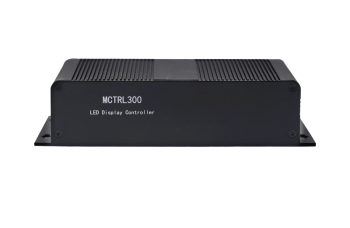Novastar A8S-N Receiving Card Armor Series Receiver Card A5s Plus/A7s Plus/A8s-N/A10s Plus-N/A10s Pro: Improving image quality through the optimization of every pixel Novastar A8S-N Receiving Card NovaLCT Performance Settings and Receiving Card
1. Full Grayscale Calibration:
Full grayscale calibration is designed to solve color blocks and inaccurate color issues with Mini LED and Micro LED displays. By generating calibration coefficients for each grayscale level, the uniformity of an LED display can be improved dramatically.
2. Dynamic Booster ??Higher contrast ratio:
By enhancing bright and dark content details to the idea level, an SDR source can deliver HDR-like effect, ensuring no overexposure in bright areas and no loss of detail in shadows.
3. Power saving with dynamic algorithm??
With real-time analysis, brightness is adjusted dynamically frame by frame, saving 20%-40% power, extending the lifespan of an LED display.
4. Image Booster:
1). 22bit+ technology allows for 64 times grayscale improvement, with 0.002nits precision control of brightness, providing a fine and vivid display image even in low brightness conditions.
2). Precise Grayscale using professional optical instruments allows for more accurate brightness control of every LED chip, making the EOTF curve (like gamma) much more accurate. This results in a natural image and improved color casting in low brightness.
3). Intelligent color management allows for a perfect match between the display’s color gamut and that of the source video. This eliminates color deviation, especially the common issue of reddish skin color. This adherence to the original intended color allows the natural beauty of the original source video to shine.
5. Display the world as it is meant to be seen:
Working with the controller that supports HDR functionality, the receiving card can reproduce the original brightness range and color space of the video source, allowing for a more lifelike image.
6. Automatic module calibration:
After a new module with flash memory is installed to replace the old one, the calibration coefficients stored in the flash memory can be automatically uploaded to the receiving card when it is powered on.
7. Dual backup of calibration coefficients:
The calibration coefficients are stored in the application area and factory area of the receiving card at the same time. Users usually use the calibration coefficients in the application area. If necessary, users can restore the calibration coefficients in the factory area to the application area.
8. Configuration file settings can be restored with one key press:
The RCFG configuration file can be restored to factory settings with the press of a single key, restoring the cabinet to its original configuration. With this feature, clients no longer need to make a phone call to request configuration files.
9. One-click firmware copy:
Armor cards have the capability to automatically learn the firmware. This allows an Armor card to copy the firmware from any operational receiving card, an extremely convenient feature.
10. Dual-card backup:
With its small form factor, Armor makes dual-card backup easy. The same space that would be occupied by a single card can be utilized by two Armor receiving cards to achieve dual-card backup. Even if one of the cards fails, the display will remain normal.
11. Smart Module:
Monitor screen status without a monitoring card.
A microprocessor (MCU) is added on each module to receive information including module temperature and voltage, pixel error detection, and calibration coefficients.









Reviews
There are no reviews yet.